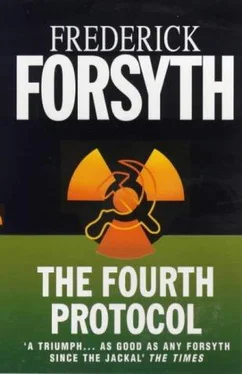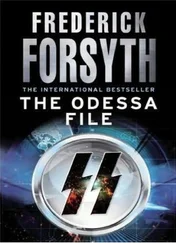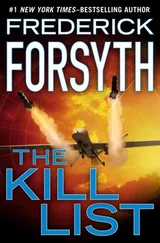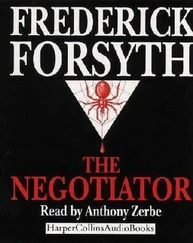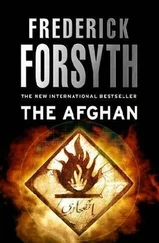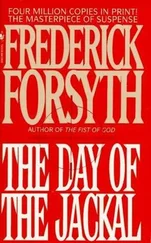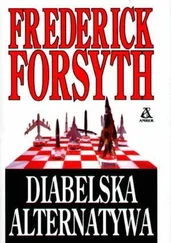Frederick Forsyth - The Fourth Protocol
Здесь есть возможность читать онлайн «Frederick Forsyth - The Fourth Protocol» весь текст электронной книги совершенно бесплатно (целиком полную версию без сокращений). В некоторых случаях можно слушать аудио, скачать через торрент в формате fb2 и присутствует краткое содержание. Жанр: Политический детектив, на английском языке. Описание произведения, (предисловие) а так же отзывы посетителей доступны на портале библиотеки ЛибКат.
- Название:The Fourth Protocol
- Автор:
- Жанр:
- Год:неизвестен
- ISBN:нет данных
- Рейтинг книги:3 / 5. Голосов: 1
-
Избранное:Добавить в избранное
- Отзывы:
-
Ваша оценка:
- 60
- 1
- 2
- 3
- 4
- 5
The Fourth Protocol: краткое содержание, описание и аннотация
Предлагаем к чтению аннотацию, описание, краткое содержание или предисловие (зависит от того, что написал сам автор книги «The Fourth Protocol»). Если вы не нашли необходимую информацию о книге — напишите в комментариях, мы постараемся отыскать её.
The Fourth Protocol — читать онлайн бесплатно полную книгу (весь текст) целиком
Ниже представлен текст книги, разбитый по страницам. Система сохранения места последней прочитанной страницы, позволяет с удобством читать онлайн бесплатно книгу «The Fourth Protocol», без необходимости каждый раз заново искать на чём Вы остановились. Поставьте закладку, и сможете в любой момент перейти на страницу, на которой закончили чтение.
Интервал:
Закладка:
“Isn’t that stuff radioactive?” asked Petrofsky, who was watching in fascination.
“Yes, but not dangerously so. People think that all radioactive materials are dangerous to the same degree. Not so. Luminous watches are radioactive, but we wear them.
Uranium is an alpha emitter, low-level. Now, plutonium—that’s really lethal. So is this stuff when it goes critical, as it will just before detonation—but not yet.”
The pair of headlights from the Mini took a lot of stripping. Vassiliev took out the glass lamps, the filament inside, and the inner reflector bowl. What he was left with was a pair of extremely heavy semispherical bowls, each of one-inch-thick hardened steel. Each bowl had a flange around its rim, drilled with sixteen holes to take the nuts and bolts.
Joined together, they would form a perfect globe.
One of the bowls had at its base a two-inch-wide hole, threaded inside to accept the steel plug from Lichka’s left shoe. The other had a short stump of tube sticking out from its base; internally it was two inches wide, and it was flanged and threaded on its outer side to screw into the steel “gun” tube from the Hanomag’s exhaust system.
The last item was the child’s ball, brought in by the camper van. Vassiliev cut away the bright rubberized skin. A ball of metal gleamed in the light.
“That’s lead wrapping,” he said. “The ball of uranium, the fissionable core of the nuke, is inside. I’ll get it out later. It’s also radioactive, like that piece over there.”
Having satisfied himself he had his nine components, he started work on the steel cabinet. Turning it on its back, he lifted the lid and with the wooden laths and rods prepared an inner frame in the form of a low cradle, which rested on the floor of the cabinet. This he covered with a thick layer of shock-absorbent foam rubber.
“I’ll pack more around the sides and over the top when the bomb’s inside,” he explained.
Taking the four batteries, he wired them up, terminal to terminal, then lashed them into a block with masking tape. Finally he bored four small holes in the lid of the cabinet and wired the block of batteries inside. It was now midday.
“Right,” he said. “Let’s put the device together. By the way, have you ever seen a nuke?”
“No,” said Petrofsky hoarsely. He was an expert in unarmed combat, unafraid of fists, knives, or guns. But the cold-blooded joviality of Vassiliev as he handled enough destructive power to flatten a town worried him. Like most people, Petrofsky regarded nuclear science as an occult art.
“Once they were very complicated,” said the assembler. “Very large, even the low-yield ones, and could be made only under extremely complex laboratory conditions. Today the really sophisticated ones, the multimegaton hydrogen weapons, still are. But the basic atomic bomb today has been simplified to a point where it can be assembled on just about any workbench—given the right parts, of course, and a bit of caution and know-how.”
“Great,” said Petrofsky. Vassiliev was cutting away the thin lead sheeting around the ball of uranium-235. The lead had been wrapped around cold, like wrapping paper, and its seams sealed with a blowtorch. It came apart quite easily. Inside was the inner ball, five inches in diameter, with a two-inch-wide hole drilled straight through the middle.
“Want to know how it works?” asked Vassiliev.
“Sure.”
“This ball is uranium. Weight, fifteen and a half kilograms. Not enough mass to have reached criticality. Uranium goes critical as its mass increases beyond criticality point.”
“What do you mean, ‘goes critical’?”
“It starts to fizz. Not literally, like soda. I mean fizz in radioactive terms. It passes to the threshold of detonation. This ball is not yet at that stage. See that short rod over there?”
“Yes.”
It was the uranium rod from the hollow fire extinguisher.
“That rod will fit exactly into the two-inch hole in the center of this ball. When it does, the whole mass will go critical. The steel tube over there is like a gun barrel, with the uranium rod as the bullet. In detonation the plastic explosive will blast the uranium rod down the tube and into the heart of this ball.”
“And it goes bang.”
“Not quite. You need the initiator. Left to itself, the uranium would fizz into extinction, create a hell of a lot of radioactivity, but no explosion. To get the bang you have to bombard the critical uranium with a blizzard of neutrons. Those two disks, the lithium and the polonium, form the initiator. Left apart, they are harmless; the polonium is a mild alpha-emitter, the lithium is inert. Smash them together and they do something odd. They start a reaction; they emit that blizzard of neutrons we need. Subjected to this, the uranium tears itself apart in a gigantic release of energy—the destruction of matter. It takes one hundred millionth of a second. The steel tamper is to hold it all together for that tiny period.”
“Who drops in the initiator?” asked Petrofsky in an attempt at gallows humor.
Vassiliev grinned. “No one. The two disks are in there already, but held apart. We put the polonium at one end of the hole in the uranium ball, and the lithium on the nose of the incoming uranium projectile. The bullet comes down the tube, into the heart of the ball, and the lithium on its nose is slammed into the polonium waiting at the other end of the tunnel. That’s it.”
Vassiliev used a drop of Super Glue to stick the polonium disk to one face of the flat steel plug from Lichka’s shoe heel. Then he screwed the plug into the hole at the base of one of the steel bowls. Taking the uranium ball, he lowered it into the bowl. The interior of that bowl had four nodules, which slotted into four indentations cast in the uranium.
When they met and engaged, the ball was held in place. Vassiliev took a pencil flashlight and peered down the hole through the core of the uranium ball.
“There it is,” he said, “waiting at the bottom of the hole.”
Then he placed the second steel bowl over the top, to form a perfect globe, and spent an hour tightening the sixteen bolts around the flange to hold the two halves together.
“Now, the gun,” he remarked. He pushed the plastic explosive down the eighteen-inch-long steel tube, tamping it firmly but gently with a broom handle from the kitchen until it was packed tightly. Through the small hole in the base of the tube, Petrofsky could make out the plastic explosive bulging up. With the same Super Glue, Vassiliev attached the lithium disk to the flat nose of the uranium rod, wrapped it in a tissue to ensure it could not slip back down the tube from vibration, and rammed the rod down onto the explosive at the bottom. Then he screwed the tube into the globe. It looked like a gray, seven-inch-diameter melon with an eighteen-inch handle sticking out of one end; a sort of oversized stick-grenade.
“Nearly done,” said Vassiliev. “The rest is conventional bomb-making.”
He took the detonator, separated the wires from its end and insulated each with tape. If they touched each other, there could be a premature detonation. A length of five-amp electrical wiring was twisted onto each wire from the detonator. Then he pressed the detonator through the hole in the far end of the tube until it was embedded in plastic explosive.
He lowered the bomb like a baby onto its foam-rubber cradle, packing more foam rubber all around its sides, and yet more over the top, as if it were going to bed. Only the two wires were kept free. One of these was attached to the positive terminal of the battery block. A third wire went from the negative terminal on the batteries, so Vassiliev still had one of each in his hands. He insulated each exposed end.
Читать дальшеИнтервал:
Закладка:
Похожие книги на «The Fourth Protocol»
Представляем Вашему вниманию похожие книги на «The Fourth Protocol» списком для выбора. Мы отобрали схожую по названию и смыслу литературу в надежде предоставить читателям больше вариантов отыскать новые, интересные, ещё непрочитанные произведения.
Обсуждение, отзывы о книге «The Fourth Protocol» и просто собственные мнения читателей. Оставьте ваши комментарии, напишите, что Вы думаете о произведении, его смысле или главных героях. Укажите что конкретно понравилось, а что нет, и почему Вы так считаете.
